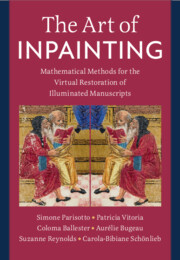4 - Deep Learning Inpainting Methods
Published online by Cambridge University Press: 22 May 2025
Summary
Chapter 4 describes the rise of deep learning inpainting methods in the past ten years. These methods learn an end-to-end mapping from a corrupted input to its estimated restoration. In contrast with traditional methods from the previous chapters, which use model-based or hand-crafted features, learning-based algorithms are able to infer the missing content by training on a large-scale dataset and can capture local or non-local dependencies inside the image and over the full dataset and exploit high-level information inherent in the image itself. In this chapter we present the seminal deep learning inpainting methods up to 2020 together with dedicated datasets designed for the inpainting problem.
Keywords
Information
- Type
- Chapter
- Information
- The Art of InpaintingMathematical Methods for the Virtual Restoration of Illuminated Manuscripts, pp. 115 - 161Publisher: Cambridge University PressPrint publication year: 2025
